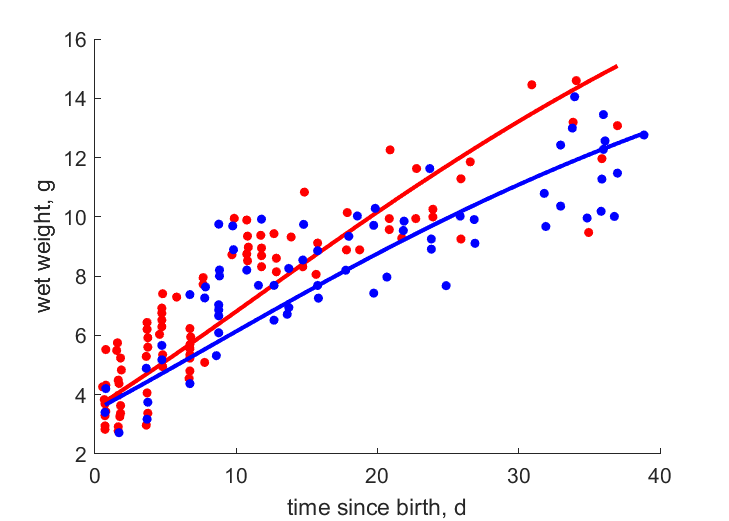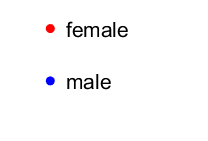Predictions & Data for this entry
| Model: stx | climate: A, B, Cfa, Df | migrate: TT | phylum: |
| COMPLETE = 2.5 | ecozone: THn | food: bxM, xiCii | class: |
| MRE = 0.092 | habitat: 0iTf | gender: Dg | order: |
| SMSE = 0.030 | embryo: Tv | reprod: O | family: |
Zero-variate data
| Data | Observed | Predicted | (RE) | Unit | Description | Reference |
|---|---|---|---|---|---|---|
| tg | 35 | 34.79 | (0.006014) | d | gestation time | AnAge |
| tp | 547 | 278.8 | (0.4903) | d | age at puberty for female | AnAge |
| tpm | 730 | 747.2 | (0.02362) | d | age at puberty for male | AnAge |
| am | 6935 | 6785 | (0.02157) | d | life span, guessed | AnAge |
| Wwb | 3.9 | 4.086 | (0.04772) | g | wet weight at birth | AnAge |
| Wwx | 17.2 | 17.05 | (0.008593) | g | wet weight at weaning | AnAge |
| Wwi | 25 | 25.78 | (0.03116) | g | ultimate wet weight of females | EoL |
| Wwim | 20 | 20.14 | (0.006989) | g | ultimate wet weight of males | EoL |
| Ri | 0.005479 | 0.004359 | (0.2045) | #/d | maximum reprod rate | AnAge |
Uni- and bivariate data
| Data | Figure | Independent variable | Dependent variable | (RE) | Reference |
|---|---|---|---|---|---|
| tW_f |   | time since birth | wet weight | (0.1595) | HoodBlos2002 |
| tW_m |   | time since birth | wet weight | (0.1414) | HoodBlos2002 |
Pseudo-data at Tref = 20°C
| Data | Generalised animal | Eptesicus fuscus | Unit | Description |
|---|---|---|---|---|
| v | 0.02 | 0.1997 | cm/d | energy conductance |
| p_M | 18 | 247.2 | J/d.cm^3 | vol-spec som maint |
| k_J | 0.002 | 0.002 | 1/d | maturity maint rate coefficient |
| k | 0.3 | 0.06299 | - | maintenance ratio |
| kap | 0.8 | 0.9174 | - | allocation fraction to soma |
| kap_G | 0.8 | 0.8061 | - | growth efficiency |
| kap_R | 0.95 | 0.95 | - | reproduction efficiency |
| t_0 | 0 | 29.68 | d | diapause (at start of gestation) |
Discussion
- High value for tp cannot be captured by the stx model with constant temperature; winter torpor probably contributes to tp
- males are assumed to differ from females by {p_Am} and E_Hp only
- mod_1: males have equal state variables at b, compared to females
Bibliography